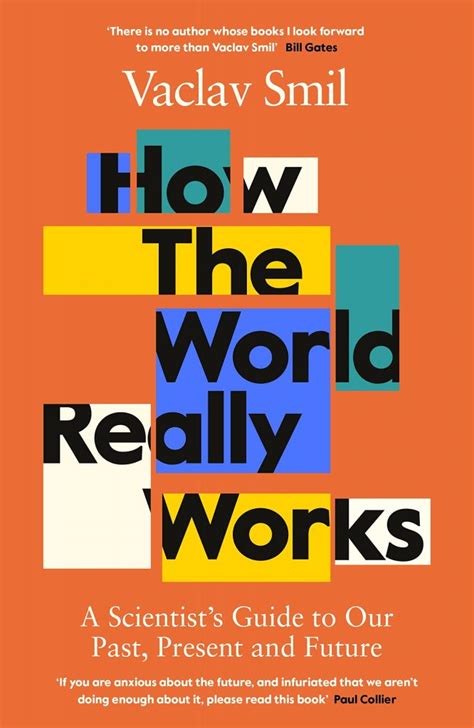by Vaclav Smil, 2022
The Science Behind How We Got Here and Where We’re Going
Smil is certainly a level-headed guy – a scientist as futurist and historian, who rejects the prophesies of both doom and techno-utopia (“the Singularity” of Ray Kurzweil). Instead he cuts right to the chase:
The real wrench in the works: we are a fossil-fueled civilization whose technical and scientific advances, quality of life, and prosperity rest on the combustion of huge quantities of fossil carbon, and we cannot simply walk away from this critical determinant of our fortunes in a few decades, never mind years. Complete decarbonization of the global economy by 2050 is now conceivable only at the cost of unthinkable global economic retreat, or a result of extraordinarily rapid transformations relying on nearly miraculous technical advances”.
pages 5, 6

To get specific, Smil identifies “4 pillars of modern civilization: ammonia, steel, concrete, and plastics” (pg. 7). Note that ammonia yields nitrogen, the key to fertilizer, hence the productivity of modern agriculture. All 4 pillars currently require large volumes of fossil fuels, producing about ¼ of world CO2. emissions. Without fossil fuels, an entirely new infrastructure would need to be developed on a massive scale, with enormous energy requirements. For example, steel requires at least 18 gigajoules per ton of hot metal, ammonia 21 gigajoules per ton (pg. 215). The current global energy usage for steel alone is comparable to the kilowatts powering a half-billion US-style houses for a year.
To dig even deeper into the basics, Smil analyzes “how unfolding environmental changes might affect our 3 existential necessities: oxygen, water, and food”. Conclusion: Sufficient oxygen is assured but there are big question marks surrounding both fresh water and food supply. Far more efficient use of water will become a necessity. Food production will also need significant improvements, particularly in Africa.
Will we have the resources to improve water management and food production as fossil fuels decline? Smil is less clear on this point. Instead he focuses on the costs of global warming and the climate necessity of fossil-fuel reduction, expressing skepticism of both carbon capture and storage, of geoengineering, and of studies of fossil-fuel reserves. As to the latter, world oil production has dropped 5% over the last 4 years, with coal production also down significantly, and strong signs of slowed global economic growth, with China leading the way.
In fact, since cheap oil has been by far the biggest driver of economic growth over the last century, it appears that this era is drawing to a close. That is, it looks like fossil-fuel-driven greenhouse gas emissions will begin to limit themselves as a consequence of economics, even in the absence of meaningful political action. Note that although natural gas is still locally abundant, it is less versatile economically, especially for transportation, and is expensive to ship overseas, requiring liquification. Smil needs to better address these fossil-fuel dynamics and their consequences.
Nevertheless, he excels at laying out the history of the fossil-fuel revolution of the global economy: “The average inhabitant of the Earth nowadays has at their disposal nearly 700 times more useful energy than their ancestors had at the beginning of the 19th century” (pg. 19). However, on the downside, “Germany’s solar panels produce electricity only 12% of the time” (pg. 25), hence its tragic dependence on Russian natural gas, and the fact that the fossil-fuel portion of Germany’s “primary energy supply has only declined from about 84% to 78%” (pg. 41) despite massive investment in renewables.
By contrast, Smil has dug deeper into the history of globalization and concluded that continued globalization is not inevitable. He points out that “the share of trade in global GDP fell from about 14% in 1913 to 4% in 1945”(p 130)—due to a panoply of disasters—and the “pro-globalization sentiment has been weakening for some time” (pg. 131). In fact, “the expansion of global value chains stopped in 2011. . . with less trade in intermediate goods and services” (pg. 132). Citing dramatic failures of resilience, Smil concludes, “we may have seen the peak of globalization, and its ebb may last not just for years but for decades to come” (pg. 133). This is followed by a whole chapter laying out a more objective assessment of risks in everyday life.
Yet it when it comes to global warming, Smil’s more realistic analysis is that “we are already committed to global warming of 2.3°C” (pg. 193) and that the long-term trend toward owning more energy-intensive goods (cars, air conditioning, etc.) will not be easy to reverse, especially in the Global South. His more realistic goals would be to replace coal-fired electricity by natural gas, gas-powered SUVs by electric cars, and tackling “large inefficiencies in construction, household, and commercial energy use” (pg. 197). Of course, efforts to grab this low-hanging fruit are already picking up steam in many locations.
What Smil does not address are the kinds of economic incentives that might accelerate such positive trends, though he does assert that “affluent countries could reduce their average per capita energy use by large margins and still retain a comfortable quality of life” (pg. 203). The obvious starting point for the U.S. would be to just look at Europe, where the current usage is about half of that in the U.S. Another ray of hope is that global population growth has slowed from 2.1% per year in the 1960s to 1.08% in 2019.
Smil identifies the biggest obstacle as the huge time delays: “even drastic reductions [in emissions]. . . will not show any convincing benefits for decades” (pg. 225). Yet history suggests a “mixture of progress and setbacks, of seemingly insurmountable difficulties and near-miraculous advances” (pg. 229).
